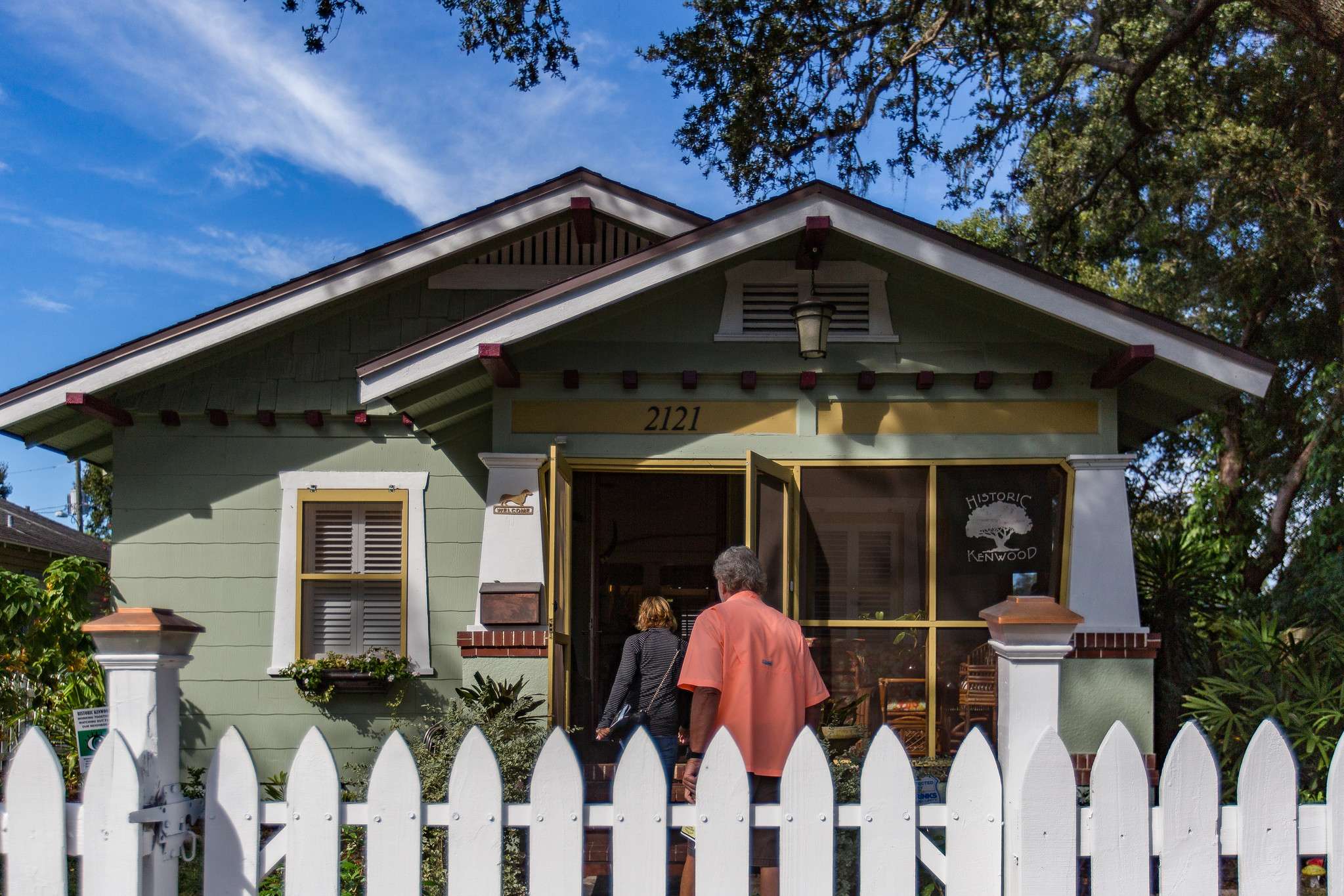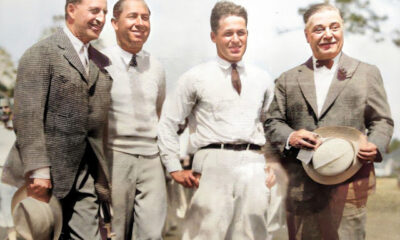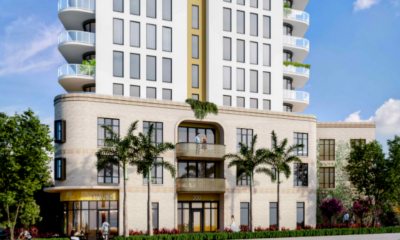Insight
What are those crazy preservationists from Preserve the ‘Burg thinking?

Welcome to the Catalyst’s Community Voices platform. We’ve curated community leaders and thinkers from all parts of our great city to speak on issues that affect us all. Visit our Community Voices page for more details.
What are those crazy preservationists from Preserve the ‘Burg thinking?
We understand that some of you probably wonder this when you read the latest news story on a contentious application for historic landmark designation. So as we introduce ourselves on the Catalyst site, a platform for business news, let us start by pointing out the under-appreciated economic rationale for historic preservation. You might find we are less crazy than you think.
“Over the long term, places with strong, distinctive identities are more likely to prosper than places without them. Every place must identify its strongest, most distinctive features and develop them, or run the risk of being all things to all persons and nothing special to any. Livability is not a middle-class luxury. It is an economic imperative.”
The quote above, from Nobel Prize Laureate Robert Merton Solow, illustrates what numerous studies prove: that creative industries are much more likely to locate in livable urban areas. Talented people are mobile, and they wish to live in interesting, authentic places. For that reason, corporate location decisions will increasingly be based on the relative attractiveness of cities.
St. Petersburg has become widely recognized as one of the most unique and dynamic cities in Florida, and is evolving into a haven for the creative class. The role of our historic neighborhoods and commercial buildings cannot be underestimated in St. Pete’s recent transformation. Through a mix of thoughtful planning and lucky accidents, the city has managed to maintain many of the buildings that make a visitor or resident realize that they are in St. Petersburg, and nowhere else. The vibrancy of Central Avenue’s 600 Block (which was saved from demolition in 2008 by the filing of a historic landmark application), the burgeoning Warehouse Arts District, the “World’s Largest” Shuffleboard Club, downtown’s historic hotels, the scores of restaurants and watering holes in unique historic buildings, and the character of our incredible historic neighborhoods are the amenities written about time and again by national media outlets.
But we are in danger of being loved to death. The very popularity that attracts tourists and new residents puts incredible pressure on historic properties. The lure of a short-term windfall will almost always be more appealing to a developer than the thoughtful reuse of a historic building, even if reuse may ultimately be better for the long-term economic health of the community.
Preservation encourages a strong local economy and economic diversity. Smaller historic buildings provide affordable space for local small businesses; artists and the creative community thrive in older, mixed-use neighborhoods; and older commercial and mixed-use districts contain hidden density – an important consideration in a community facing challenges of affordable housing.
It is crucial that the preservation of valuable cultural heritage be built into the development plans of a city from an early stage, to avoid what economist Martin Rama calls “the frantic transformation of cities into soulless agglomerations of generic architecture.” Preserving what may prove to be an essential differentiator of the city must be built into that city’s development plans from the start, not left until later when it will be certainly more expensive, and perhaps impossible, to regain what was lost.
Preservation Increases Value
More than 90 percent of studies on historic preservation demonstrate that properties and neighborhoods with historic designation experience value enhancement. Why is that? Economist Donovan Rypkema points out:
“The most basic reason comes from the real estate cliché: “The three most important things in real estate are location, location, location.” Note that the cliché is not: “The three most important things are roof, walls, and floor.” The majority of the economic value of a particular parcel of real estate comes not from within the property lines but from its context; that is, its location within a given neighborhood and its adjacent public facilities and natural and cultural surroundings. That is why even within a small city, the same house in a different neighborhood will command a different, sometimes dramatically different, market value. The economic role of land-use laws in general, and historic designation in particular, is to protect the context within which the individual property is situated.”
Preserve the ‘Burg plays an important role in our city’s ongoing success. We speak up for our special buildings and places to encourage our city leaders to make the best long-term development decisions. We seek a balance between the preservation of the historic resources that give St. Petersburg its distinct character, and new development, both of which provide for continued growth and economic vitality. The objective is to create a livable city – a place where people like to go, meet, work and invest, linking historic preservation and local economic development.
We’re not crazy. We’re just watching out for the bottom line too.








Joe Farrell
May 24, 2019at2:22 pm
I believe in historic preservation. There is economic and social gains to be had in the name of historic preservation in certain instances, but this reasoning can applied to any single property and if it was applied to just any or every property it would fall apart quickly. Lets keep in mind the cost of maintaining a historically designated property is more expensive, property insurance for a historically designated property is more expensive, and energy costs are far more expensive for an older home. I’m not even touching Flood Insurance costs. I could go on. I’m not going to say this is nonsense, but it leaves a whole lot out.
Jeffrey Herrmann
May 22, 2019at12:59 am
Why can’t money be raised by the people who want to preserve structures and the many people who might support them buy these properties. In Vermont Land Trusts are very active in keeping historic properties or environmentally significant in use. For example if a retired couple wants to realize the value of their life’s work and sell a motel to a developer the Land Trust steps in and buys the property and leases to young couple who agrees to run it as it was.
Barbara Schnipper
May 21, 2019at11:48 pm
It’s good to know that leaders in St. Petersburg value history and uniqueness rather than allowing more expensive, tall buildings that create a “wind tunnel” effect. I believe the city should preserve the “soul” of the city so that future generations can appreciate the work being done right now by people who care for the ‘Burg.
matthew weidner
May 21, 2019at7:33 pm
This is just absolute nonsense….the preserve fanatics pull out these troupes about value…but without hard analysis about the real costs to the individuals who are slapped with the restrictive mark of preservation. It is offensive to basic notions of property rights and freedoms that a stranger can come in and impose their will on their neighbors property. And in particular with St. Petersburg’s current environment, there is zero analysis or factual inquiry regarding the impact of sea level rise or the costs mandated for preserving structures.
Mark Barasz
May 22, 2019at9:55 am
It is accepted that you could not put a gas station anywhere. Property rights are obviously restricted in many other ways. The case for preserving the past versus constructing the future is one that requires balance and community input.